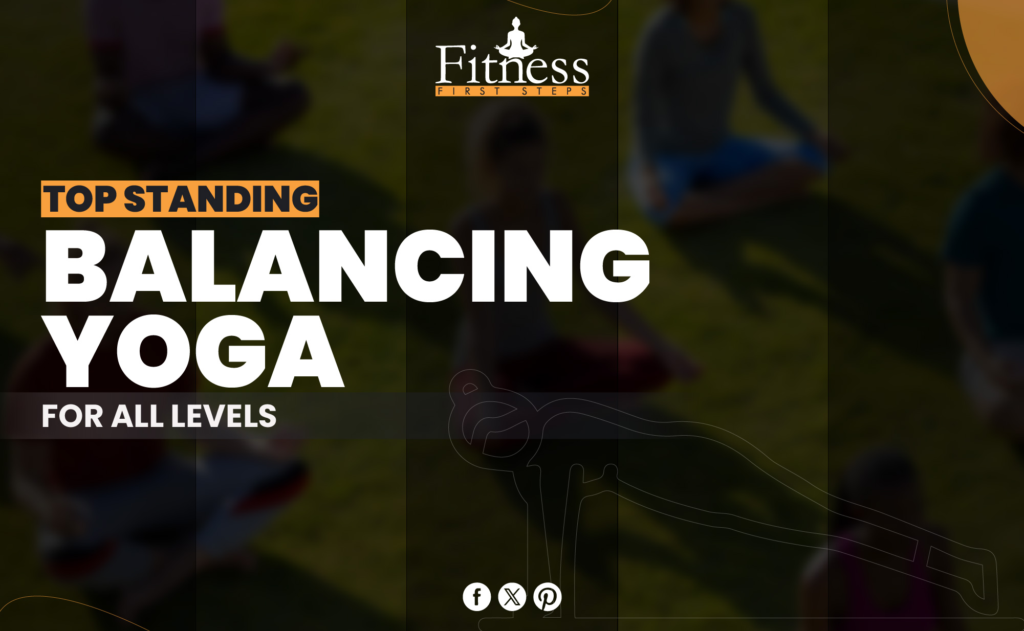Introduction
Welcome to our comprehensive Yoga Therapy Training guide! If you’ve wondered how yoga can be used beyond fitness, you’ll discover it. This blog explores the unique intersection of ancient wisdom and modern medicine, revealing yoga therapy’s transformational power. Whether you’re a beginner or an experienced practitioner, learn about yoga’s therapeutic benefits and how to become a certified yoga therapist. Roll out your mat, and let’s explore Yoga Therapy Training!
What is Yoga Therapy?
In yoga therapy, different yogic methods are used to improve people’s physical, mental, and emotional health. Unlike regular yoga classes, which focus on getting fit and flexible, yoga therapy changes poses to fit each person’s health needs and problems.
Put, yoga therapy combines the ideas of yoga with those from modern psychology and health. It understands that the mind, body, and spirit are linked and aims to bring balance and harmony.
Yoga therapy uses asanas (yoga poses), pranayama (breath control), meditation, and relaxation methods to help people with health problems feel better, control their conditions, and improve their quality of life overall. It’s a method that looks at the person, not just their symptoms or illnesses.
In the end, yoga therapy gives people the tools to be active in their healing, promoting self-awareness, self-care, and personal growth. It is a journey of self-discovery and empowerment based on the old wisdom of yoga and is customized to fit the needs of each practitioner.
The Roots of Yoga Therapy
In ancient India, yoga was developed to balance the body, mind, and spirit. This is where yoga therapy got its start. The healing benefits of yoga were first written about in the Vedas and the Upanishads around 1500 BCE. Patanjali’s Yoga Sutras, written around 400 CE, went into even more detail.
The ancient yogis knew that mental and physical health were closely connected and used yoga to regain balance and improve health. Over time, yoga changed, taking ideas from different cultures and keeping its primary goal of healing the whole person.
As we learn more about yoga therapy today, we respect this ancient tradition and use the knowledge passed down for hundreds of years to help us find holistic health and well-being.
Modern Yoga Therapy | A Blend of Old and New
As we live in the present, yoga treatment is a harmonious blend of old knowledge and new science. It is based on traditions that go back thousands of years, but it changes to fit the needs and problems of today.
The Yoga Sutras of Patanjali and the Vedas are ancient texts used in modern yoga therapy. These texts combine old ideas with the newest health, psychology, and neuroscience discoveries. Putting old and new together this way creates a powerful balance that can help solve all of life’s problems.
Since scientific studies have shown that yoga can help with healing, modern yoga therapy is becoming more popular as a natural way to improve health and well-being. You can use yoga therapy to deal with a wide range of health issues, from reducing stress and pain to easing anxiety and improving general health.
Even though it is used in modern times, yoga treatment has its roots in ancient knowledge that sees the person as a whole. It recognizes that body, mind, and spirit are all linked and that healing only happens when all three are balanced.
Modern yoga therapy is a guiding light that shows us the way to wholeness and health as we deal with the difficulties of contemporary life. It encourages us to use ancient yoga lessons and the latest scientific discoveries. This will help us create balance, strength, and health.
The Core Components of Yoga Therapy Training
Anatomy and Physiology: Understanding the basic structure and functions of the human body is essential for yoga treatment to work. Graduates learn about the mental, musculoskeletal, respiratory, and circulatory systems and how yoga affects health.
Yoga Philosophy and Psychology: Besides focusing on the physical body, yoga therapy explores yoga’s mental and spiritual sides. Students study the Yoga Sutras, the Bhagavad Gita, and modern psychology to learn about the mind-body connection and the role of awareness in healing.
Therapeutic Techniques: Many different methods are used in yoga therapy to help with other health problems. Trainees learn to make asanas (yoga poses), pranayama (breath control), meditation, and mindfulness routines that fit their needs.
Assessment Methods: Thoroughly checking out the client’s physical, mental, and emotional health is the first step in effective yoga treatment. In addition to learning how to do physical exams and observing people’s movement patterns, trainees also learn how to do formal interviews.
Ethics and Professionalism: Future yoga therapists and trainees follow the greatest moral and professional standards. Their education includes keeping client information private, setting limits, getting informed permission, and the significance of ongoing self-care and professional growth.
The Client-Therapist Relationship: The connection between the client and the therapist is vital to yoga therapy. Trainees look into how this relationship works and learn how to build trust, speak clearly, and make a safe, supportive space for healing.
These basic ideas are what yoga therapy training is built on. They give students the information, skills, and moral guidance they need to start a fulfilling career as holistic healers.
Who Should Consider Yoga Therapy Training?
Anyone who wants to learn yoga therapy and is interested in health, fitness, and holistic healing can do yoga therapy training. Here are some groups that might gain from training in yoga therapy:
Yoga Enthusiasts: If you love yoga and believe it can change your life, training in yoga therapy can help you learn more and take your practice to a whole new level.
Healthcare Professionals: Yoga therapy training can benefit doctors, nurses, physical therapists, psychologists, and other healthcare workers who want to use complementary and alternative treatments.
Yoga Teachers: Yoga teachers who are already good at teaching yoga but want to learn more and give their students more specialized services can get training in yoga therapy to improve their teaching.
Mental Health Practitioners: If counselors, therapists, and social workers want to use mind-body methods, they can benefit from learning the basic ideas and techniques of yoga therapy.
Holistic Practitioners: Complementary and alternative medicine practitioners, like acupuncturists, massage therapists, and naturopaths, may find that training in yoga therapy adds to their skills and makes it easier for them to help their clients stay healthy.
Individuals Seeking Personal Growth: Yoga therapy training can help you grow, learn, and care for yourself, even if you’re not a healthcare or wellness professional. Yoga therapy training may suit your interests in holistic health and yoga’s therapeutic potential.
Yoga therapy training is open to anybody who wants to use yoga for healing, whether for personal or professional growth. A voyage of discovery, learning, and transformation that may improve lives and communities.
Becoming a Yoga Therapist
Starting on the road to becoming a yoga therapist is a life-changing and enriching process that takes place over time. You can get an idea of what this trip is like
Self-Reflection and Preparation: Beginners in yoga therapy self-reflect on their motives, passions, and readiness for the route ahead. They can gain self-awareness and equilibrium by deepening their yoga practice.
Education and Training: Journeys require formal education and expertise. Yoga therapists study in recognized institutions, combining classroom, hands-on, and clinical experience. Anatomy, physiology, psychology, yoga philosophy, therapeutic methods, and ethics are covered.
Experiential Learning and Practice: Aspiring yoga therapists practice outside the classroom. They apply theoretical knowledge to real-life situations with clients under experienced mentors and teachers. Clinical practice and supervised internships improve their abilities, confidence, and understanding of yoga therapy.
Personal Growth and Transformation: Being a yoga therapist is as much about personal growth as professional progress. Aspiring therapists face their concerns, blind spots, and limits, developing resilience, compassion, and authenticity. They can learn from their healing journey to help future customers.
Integration and Certification: Aspiring yoga therapists integrate and are certified after training. They review, reflect, and prepare for certification tests. Certification gives yoga therapists and clients confidence in their abilities.
Continued Learning and Development: After certification, the path continues with learning and development. Yoga therapists learn about the newest research, techniques, and best practices throughout their careers. Their priorities are continuous education, workshops, conferences, mentorship, and collaboration.
Aspiring yoga therapists become skilled practitioners who can change lives through dedication, perseverance, and a profound commitment to their work. As yoga practitioners and lights of healing and hope in a changing world, their journey is both professional and personal.
What You Will Learn
A thorough yoga therapy training program gives you the knowledge, abilities, and insights you need to become a skilled yoga therapist. Overview of what you’ll learn:
Foundations of Yoga Therapy: Learn about the history, philosophy, and principles of yoga therapy to see how it came to be and how it has changed over time as a way to heal the whole person.
Anatomy and Physiology: Learn about the shape and function of the human body by looking at its muscles, bones, joints, organs, and systems. You will also learn about how yoga affects health and well-being.
Yoga Techniques and Practices: Learn about many different practices and techniques, such as asanas (postures), pranayama (breath control), meditation, relaxation methods, and therapeutic sequencing.
Therapeutic Applications of Yoga: Find out how to change your yoga practice to help with specific health problems and issues, like chronic pain, stress-related disorders, sadness, anxiety, and trauma.
Assessment and Evaluation: Use intake interviews, observation, and movement analysis to assess clients’ physical, mental, and emotional health and customize yoga therapy sessions.
Yoga Philosophy and Psychology: Explore yoga therapy’s philosophical and psychological foundations, combining ancient knowledge with modern ideas to grasp the mind-body link and consciousness in healing.
Ethics and Professionalism: Learn the ethical rules and standards for yoga therapists, such as protecting client privacy, setting boundaries, getting informed permission, and keeping your professional integrity.
By focusing on yoga therapy training through course outline, you’ll become sure of yourself and a skilled yoga therapist, ready to use the healing power of yoga to change other people’s lives.
Clinical Practice in Yoga Therapy
Aspiring yoga therapists can apply academic knowledge in real-world settings under the supervision of experienced mentors through clinical practice. Expectations for clinical practice:
Client Interaction:
Build rapport and a supportive therapeutic relationship with clients in one-on-one sessions. Build trust and safety for healing via active listening, empathy, and good communication.
Assessment and Evaluation:
Do complete checks on your client’s physical, mental, and emotional health by talking to them, watching them, and analyzing their movements to learn about their needs and worries.
Customized Treatment Plans:
Create personalized treatment plans for each client, considering their health conditions, desires, and goals. Utilize various yoga methods and techniques to address specific issues, like easing pain, lowering stress, or boosting movement.
Hands-On Assistance:
Yoga therapy sessions should include hands-on support and adjustments to ensure client safety and effectiveness. Add verbal prompts, soft touch, and props to each pose to improve alignment and therapeutic benefits.
Mindfulness and Awareness:
Help clients exercise mindfulness and body awareness by observing sensations, thoughts, and emotions without judgment. Encourage self-compassion and acceptance during healing.
Progress Monitoring and Adaptation:
Monitor clients’ progress and well-being and alter treatment plans depending on their input and changing requirements. Facilitate open communication and collaboration to empower and assist clients’ healing.
Documentation and Reflection:
Please document each client session, including progress notes, views, and thoughts. Track outcomes, judge effectiveness, and use this information to help choose future treatment.
Ethical Considerations:
In all parts of clinical work, you should follow ethical guidelines and standards of practice and respect your clients’ privacy, autonomy, and dignity. As a professional, please ensure you are honest and responsible with clients and coworkers.
By participating in yoga therapy training, aspiring yoga therapists improve their skills and learn more about yoga therapy’s transforming power. It’s essential to being a skilled and compassionate healer who can change lives.
The Impact of Yoga Therapy on Health
Yoga therapy has a significant effect on health and well-being as a whole. It can help with both physical problems and mental and emotional issues. Here are some ways that yoga treatment can improve health:
Physical Health: Regular yoga therapy improves flexibility, strength, and balance, lowering injury risk and improving fitness. It can also relieve chronic pain like lower back pain, arthritis, and fibromyalgia by relaxing, reducing inflammation, and boosting circulation.
Mental Health: Yoga therapy helps manage stress, anxiety, and depression. Breathwork, mindfulness, and relaxation help soothe the nervous system, regulate emotions, and build inner peace and resilience. Yoga improves sleep, mental clarity, and concentration.
Emotional Well-Being: Yoga therapy improves self-awareness and emotional regulation by helping people understand their ideas, feelings, and actions. Yoga therapy promotes self-compassion, acceptance, and forgiveness, which help people overcome life’s problems.
Chronic Disease Management: Yoga can supplement regular medical treatment for hypertension, diabetes, and heart disease. Yoga therapy can help chronically ill people manage symptoms and enhance quality of life by lowering stress, increasing circulation, and boosting immunity.
Trauma Recovery: Yoga therapy provides a safe area for trauma survivors to heal and explore themselves. Through gentle movement, breathwork, and mindfulness, people can release tension and trauma, feel safe and empowered, and regain completeness and energy.
Holistic Well-Being: Most importantly, yoga therapy looks at the whole person—body, mind, and spirit. Yoga therapy improves mental, emotional, and physical wellness to create balance, harmony, and vitality in all aspects of life.
It empowers people to self-care and evolve via a holistic approach to health and healing. Yoga therapy can improve physical, mental, and overall health and wellness for life.
Finding the Right Yoga Therapy Training Program
Selecting the appropriate yoga therapy training school is very important if you want to build a strong career as a yoga therapist. Consider these important things when looking for the right program:
Accreditation and Certification:
Choose programs approved by respectable organizations like the International Association of Yoga Therapists. Certification from a recognized institution guarantees high education and industry standards.
Curriculum and Course Content:
Ensure the curriculum covers anatomy, physiology, treatment procedures, assessment methodologies, and ethics. Look for well-rounded programs that combine theory and practice.
Faculty and Instructors:
Find out about the teacher’s and instructors’ credentials and experience. Look for programs that yoga teachers and therapists run with a lot of experience who are friendly, informed, and willing to help students learn.
Clinical Experience and Supervision:
Find out about the teacher’s and instructors’ credentials and experience. Look for programs that yoga teachers and therapists run with a lot of experience who are friendly, informed, and willing to help students learn.
Flexibility and Accessibility:
Consider tuition costs, program structure, schedule, and location. Select an in-person intensive, part-time weekend format, or online course based on your learning choices, lifestyle, and financial constraints.
Student Support and Resources:
Check out how much help and tools are available for students, like career services, mentoring, and peer support. Look for programs that put student success first and offer help after graduation.
Reputation and Reviews:
Read reviews from current and former students to find out how well-known the school is. Find schools with good reviews, many graduates doing well as yoga therapists, and a high success rate.
Align with Personal Goals and Values:
Consider your yoga therapy goals and aspirations. Choose a program that matches your interests, values, and professional goals, whether you want to work with specific groups, specialize in therapy, or open your practice.
By carefully considering these elements and researching, you can choose the ideal yoga therapy training program to launch a rewarding career.
Certification and Beyond
Certification validates your yoga therapy skills and passion. Here’s what to expect following accreditation and how to advance your career:
Professional Recognition: Yoga therapist certification establishes your credibility and professional reputation with clients, companies, and coworkers. It provides healthcare and wellness employment, private practice, and cooperation options.
Continuing Education: Attend workshops, conferences, and courses by continuing your education and professional development. You can stay tuned on yoga therapy research, techniques, and best practices to improve your skills.
Specialization and Advanced Training: Consider advanced training or certifications in trauma-informed yoga therapy, chronic pain management, or mental health. Advanced training helps you serve various groups with unique needs.
Supervision and Mentorship: Ask experienced yoga therapists and educators for supervision and mentoring. Mentorship helps you improve your abilities, overcome obstacles, and advance professionally by providing direction, support, and feedback.
Networking and Collaboration: Network with healthcare experts, yoga teachers, and wellness practitioners at events, professional groups, and online forums. Work on interdisciplinary teams, referral networks, and research projects to increase healthcare impact.
Community Engagement: Work with your community to promote yoga therapy as a healing modality. Reach underrepresented populations, encourage health and wellness, and enhance yoga therapy awareness with workshops, classes, and outreach activities.
Self-Care and Well-Being: Consider self-care and well-being crucial to your career. Maintain a regular yoga and meditation practice, adopt healthy living choices, and seek support from colleagues, friends, and mentors to avoid burnout and thrive in service.
You can continue to grow as a yoga therapist by using certification as a way to get better. This will help you make a difference in other people’s lives and help yoga therapy become a more respected and valued career.
Conclusion
Finally, yoga therapy training offers a rich tapestry of knowledge, skills, and experiences for holistic health and well-being enthusiasts. From ancient origins to modern applications, from therapeutic approaches to compassion and self-awareness, becoming a yoga therapist is transforming and gratifying.
After rigorous schooling, clinical experience, and continued professional development, aspiring yoga therapists become expert practitioners who can change lives. They help clients uncover their intrinsic potential for health, happiness, and vitality by embodying yoga’s principles of oneness, balance, and wholeness.
As we complete our examination, remember that yoga therapy is a calling, vocation, spiritual journey of self-discovery, and service to others. May we embrace the ancient knowledge of yoga while embracing current science, weaving a tapestry of healing, resilience, and transformation for ourselves and those we serve.




